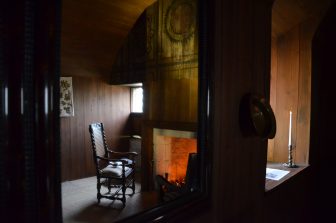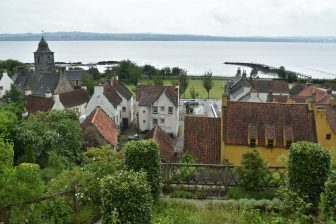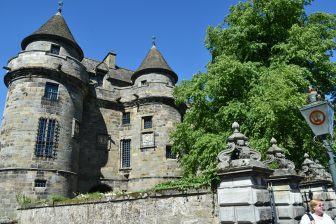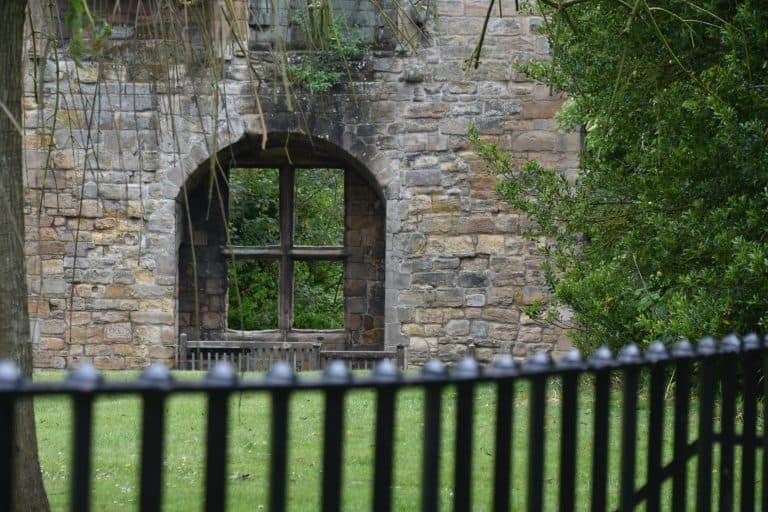
[June, 2021] After spending a lovely morning in Culross, a small town in the Scottish region of Fife, we took the bus to Dunfermline, where the train station is located.
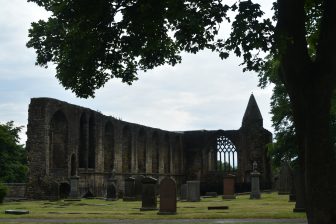
We decided to take a look at this city and walked around a bit.
Like in Culross, there are ruins of a palace and an abbey.
We asked the bus station how to reach them, they should have been located next to each other, but the answer was rather vague, “somewhere over there”.
Locals may not be interested in tourist attractions.
We found the ruins of the abbey, but the church appears to be still in operation and a wedding ceremony was taking place.

So we couldn’t go in.
The groom and another man, who appeared to be his best man, wore grayish skirts, kilt.
The kilt is a national attire firmly rooted in the Scottish people, not a folk costume to be shown to tourists.
From the bus window, I saw a kilt shop on the street in the residential area, and I heard that all the Scottish fans who went to see the European football championship were wearing kilts.
According to the guidebook, the monastery was a Benedictine abbey founded by Queen Margaret in the 12th century.
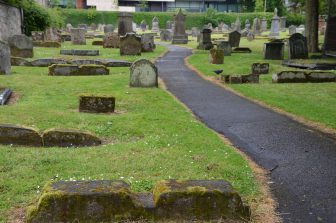
Margaret lived in Edinburgh Castle and crossed the Firth of Forth to help the poor, and in 1250 she became a saint.
The name of the town, Queensferry, on the outskirts of Edinburgh, comes from the fact that Queen Margaret crossed the Firth of Forth by ferry from here, according to our tour guide when we took a trip to the Fife region a week earlier.
We noticed that ‘The Bruce’ was curved high up on Dunfermline Abbey.
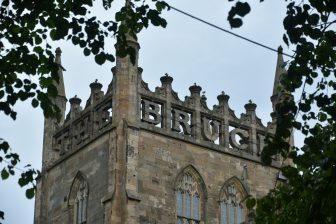
I didn’t know this at the time, but later I found out that Robert the Bruce, the king and hero of Scotland in the 13th and 14th centuries, was buried here.
Next to the ruins of the monastery, there were the ruins of a palace, built in the XVI century by remodeling the former guest rooms of the monastery.
The surrounding area was a large park and this Saturday some residents were taking a stroll.
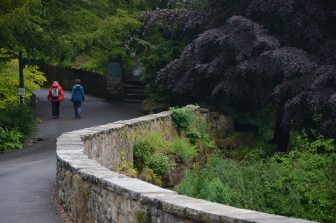
We didn’t have much time, so after walking for a while, we headed to the train station.
The main road we went through was the one of a not very affluent provincial town, that could be found everywhere in the UK.
Inexpensive chain stores and charity shops were lined up along the street.
The only thing that stood out was the high number of Turkish barber shops.
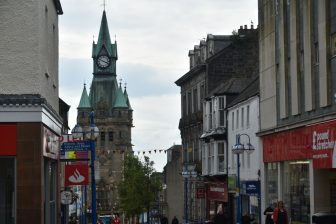
I have never heard of Turkish barbers with a particularly good reputation, but there were many barbershops here which indicated that they were Turkish.
It was a city with far more barbershops than hairdressers for women.
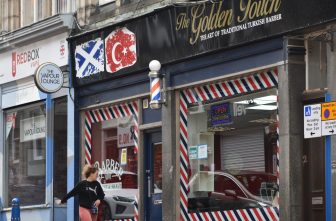
Also, not far from the station, there were large nice houses lined up, so I was curious to see the ads in the real estate agent’s window, and I found that the prices were much much lower than the prices of apartments in London.
You can buy a sizable villa for the price of a 2-3 bed flat in London.
It’s a 30-minute train ride from Edinburgh, so it’s easily accessible by commuters.
It could be a comfortable city to live in.

